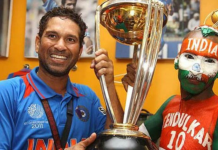
Any job comes with a lot of hard work but they say that Bihar CM’s job is the toughest. Let’s see how:
1. From poor to poorer
A comparison of Bihar’s per capita income shows that while in the 1960s, too, the state was among the country’s poorest, the income gap has kept widening over the years. In 1960-61 the state’s per capita income was 54.7% of India’s overall per capita income. This declined to 42.1% in 1989-90 – the start of Lalu’s era and went further down to 34.6% by 2019-20, when Nitish Kumar’s current term ended.
2. Biharis migrate to work in factories outside the state
Compared with other states with largely agricultural economies, the situation of Bihar’s manufacturing sector stands out. Apart from Delhi (which is a services-driven advanced economy), no other major state has this meagre a share of manufacturing in their overall economy. Ironically, many industrialised states have a significant chunk of labour from Bihar working in their manufacturing sectors.

3. Big chunk of working-age people absent from job market
Bihar has the lowest labour force participation rate (LFPR) among the economically active 15+ age group. LFPR is the proportion of people in a particular age group who are either employed or are actively seeking employment.
4. Youth unemployment rate second highest
Apart from the low LFPR, which denotes a withdrawal from the job market because of a lack of opportunities, Bihar has the country’s second-highest youth unemployment rate. After Kerala (whose LFPR is about 10 percentage points higher), Bihar has the highest youth unemployment rate.
5. And more are set to join the job market
Compared with states like Kerala that have an older population, over a third of Bihar’s population is below 14 years of age. Many of them will soon join the job market.
6. Over a fifth of youths haven’t gone to school
Not only is its population young, but almost 25% of them have not gone to school, making their job prospects even worse. UP, another Bimaru state, fares a lot better.
7. It has smallest share of students in college
The lack of colleges as well as irregular academic sessions mean Bihar has the lowest share of college students up to 35 years who have attended some educational institution. This share is also low as many students migrate from the state for higher studies.
8. Private coaching is a go-to fix for most parents
The poor state of education is also reflected in the high share of academic expense going towards paying for private coaching.
9. But, the state spends a good chunk on education
Despite significant expenditure by the state government, the quality of educational institutions seems to have suffered, mainly perhaps due to contractual hiring of teachers.
10. Health infrastructure worst in the country
When it comes to the availability of hospital beds — a ratio that is the yardstick for a state’s health infrastructure — Bihar ranks at the bottom.
Source: Times Of India


































